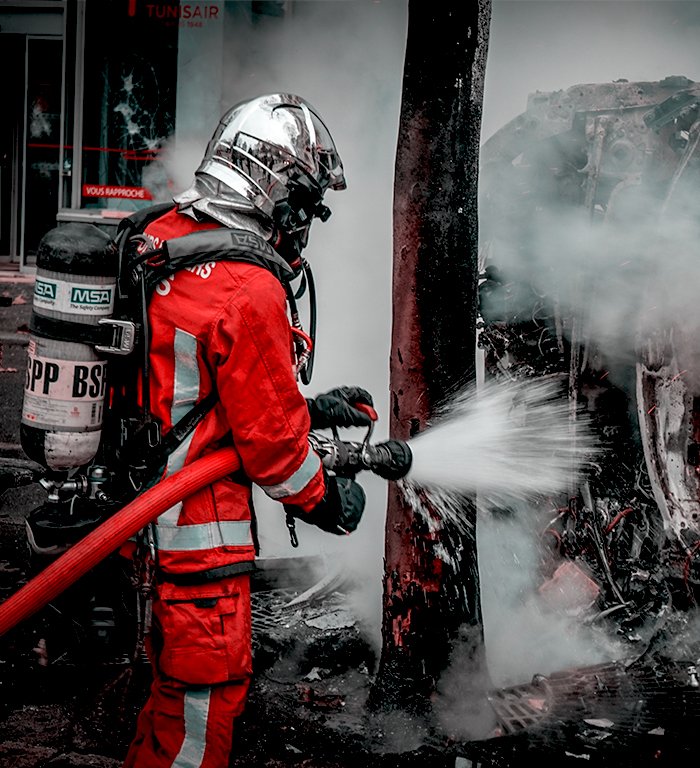- Annual Maintenance Contracts
- Automatic water extinguishing systems
- Design and approval of safety plans
- Fire early warning systems
- Fire extinguisher maintenance and filling
- Fire pumps
- Gas extinguishing systems
- Ground feeding networks (polyethylene)
- Manual fire extinguishing systems
- Safety Equipment Installation Certificate Technical/Municipal Report
- Surveillance cameras
Sahm Al-Waqaya Safety Equipment Company
Gas Fire Extinguishing Systems
These systems are used to extinguish fires in devices, liquids and materials that are at risk of damage. The extinguishing theory depends on breaking the fire triangle by removing one or all of its sides. Therefore, extinguishing operations are governed by three methods:
choke the fire
Fire can be extinguished by blocking oxygen using methods such as sealing ventilation, covering flammable materials with chemical foams, or replacing oxygen with water vapor, carbon dioxide, or dry chemical powders.
fire cooling
Reducing the temperature of the material involved using water that is introduced to the fire. When water is used for cooling purposes, the temperature of the water rises until it reaches the boiling point & turns into steam.
starve fire
Fires are starved by reducing the amount of flammable material, such as closing off flammable gas valves, or by breaking up the burning material into smaller, controllable fires.
Advantages of Gas Fire Suppression Systems:
- Protect sensitive equipment such as electronics and servers.
- Leave no residue or physical damage after extinguishing.
- Environmentally friendly, using clean and non-polluting gases.
- Effective in suppressing various types of fires, including electrical fires and flammable material fires.
Applications:
- Server rooms and data centers.
- Laboratories and medical facilities.
- Museums and libraries to protect valuable materials.
- Factories containing sensitive chemicals.
Gas fire suppression systems are a strategic choice for preserving sensitive assets, minimizing fire damage, and ensuring the highest levels of safety and rapid emergency response.

